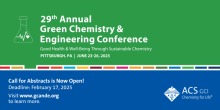Study of the Reactivity and the Selectivity of the Diels-Alder Reactions of Furanylboron Compounds with Maleimides
Diels-Alder (DA) reactions result in the formation of two carbon-carbon bonds of six-membered ring structures with high atom economy. The use of unsaturated organoboranes, which are widely available and exhibit low toxicity, enables the modulation of reactivity and selectivity in these reactions and also allow a variety of subsequent transformations the carbon-boron bond. These characteristics align these reactions with the principles of green chemistry.



